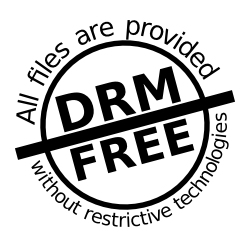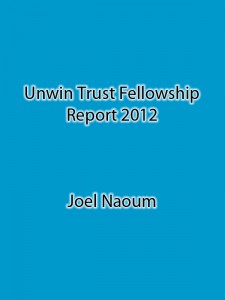
This post is based on a speech made at the Society of Editors and was originally published in the Blue Pencil
I’d like to start with a recent example of the necessity of editors in the world of digital publishing. The Casual Vacancy by J. K. Rowling was released around the world by various publishers simultaneously, which is no small achievement. Unfortunately it was discovered after the release that the Kindle file had issues: the ebook was restricted to two font sizes—very large and very small. I spent three months in the UK in 2011 for the Unwin Trust Fellowship investigating different experiments in digital publishing in London. One of the things I discovered is that many publishing houses in the UK have massive departments that deal with ebook checking. However, there are a few that don’t and they tend to rely too much on the typesetter to perform quality assurance instead of in-house talent—unsurprisingly, these are generally the ones that make mistakes like in the case of The Casual Vacancy.
I don’t believe there is ever going to be a point when editorial skills and editors, whether in-house or freelance, are going to be unnecessary for the production of good quality ebooks. And the best bit? The skills required to publish a print book and an ebook are almost exactly the same.
Almost, of course, is the important bit. Freelancers will need to be much more flexible than they are now. Some freelance editors are very strict about whether they will work on screen or not, or fussy about different software packages. Editors no longer have the luxury of pretending that digital books don’t exist because they don’t like them or they don’t read them.
One of the most basic things for editors to keep in mind when planning to move into digital publishing is to actually—at least occasionally—read ebooks. While most ebooks are pretty similar to the print equivalent there are some fundamental differences, and if you’ve never even read an ebook then there are certain basic things you will miss when checking to see if it has been edited correctly.
The structural, developmental side of editing is probably going to be the biggest change to the editorial process, at least for more complex digital texts. To be an effective structural or developmental editor of an enhanced ebook or book app a much deeper level of understanding of the technology that underpins these products is required.
Another thing that is likely to change over the coming years is the conceptual focus on the appearance of books as opposed to their structure. What I mean by this is that with ebooks it is less important to see what the book looks like than it is to see how it is structured. Modern editing has been focused on desktop publishing—the font size of a particular heading level, or the leading, or the kerning—but that is going to begin shifting back towards the idea of text as a structure. In other words, in digital, structure trumps style.
Ebook examples
Some fairly recent examples of ebooks include an app version of Frankenstein. Basically, it is a choose-your-own-adventure style of book, but it is a lot more complicated than that. A digital publisher, an author and a games developer got together for this production, combining their relevant expertise. They have adapted the original Frankenstein and added more than twice as much text. The ebook is not entirely interactive; it’s more like an exploration of the interior of the character, making choices about what to feel and experience rather than influencing the plot. The kind of editing, structural editing in particular, that you would do in a text like this is obviously going to be completely different to how you would approach a linear text.
In The Wasteland, the poem has been transformed into an iPad app. It is much more than just the poem; it has audio recordings by various people reading the poem live, including T.S. Eliot at two different times of his life. There is also video and an annotated version. Most importantly, perhaps, the app makes it easy to move the additional material out of the way and read the poem straight.
The children’s book app Cinderella, published by Nosy Crow, takes the interactive, playful side of children’s print books to a digital extreme. I have seen kids interact with this particular book and it’s amazing to see how well they respond. Although it’s primarily text in the same sense that a picture book is, there are many more opportunities for interactivity in Cinderella. Nosy Crow are set up to publish both digital and print books, but the digital development is where they are concentrating most on innovation, and it shows.
Another example of a successful enhanced ebook is The Game of Thrones Enhanced Edition by George RR Martin. These books are quite long and detailed, and they contain a lot of characters. HarperCollins is selling an enhanced version of this book, which has a mix of enhanced ebook features. If you click on an icon or use a gesture, an interactive map is pulled up that shows where each of the characters is in the world at any point of the story. The other useful feature is also the simplest: every time a character is mentioned you can tap on their name and go to the family tree to be reminded of who they are.
Metadata
There are all sorts of clever ways people are coming up with to market ebooks online, but almost everyone I spoke to said accurate metadata is by far the best way to sell books. For those who don’t know what metadata is, it’s the information associated with a book that isn’t the book itself. This includes the book blurb, pricing, ISBN, author information, page extent and so on. Unfortunately many books have inaccurate or incomplete metadata. When metadata is incorrect it can make it difficult or impossible for people to find a book when they are looking for it, and that means that all marketing attempts are going to be pointless. Improving metadata should be the first and most important step in making books available for sale online – whether in print or in digital as both mediums require metadata to sell over the web.
Metadata is relevant to editors as they are generally the most likely to know whether metadata is correct or not for their own titles. It is also important when it comes to freelance ebook quality assurance as a lot of this information is embedded in the ebook file. It only takes a little bit of extra effort to double check that this information is accurate and complete and that will help ensure that the book finds an audience.
On-screen editing
I talk to too many editors who say ‘Microsoft Word doesn’t work properly’, or ‘we should be waiting for something better’. Microsoft Word is never going to be perfect. It may not be the best program, but almost everybody has access to it, so when dealing with authors and publishers, Microsoft Word is going to be the standard for some time to come. Editors of the future are going to be MS Word Ninjas. In my experience, those editors that know Word really well end up with fewer errors in the books they work on. This is not about having a good eye. It is about knowing how to use the tools that are available to you.
I’m managing books at Momentum from commissioning all the way through to the proofreading stage. The books that have been edited by an editor who understands Microsoft Word properly and knows how to use styles and templates are almost always of a higher quality at the end of this process. Knowing how to use Word means you can focus more easily on the text instead of spending time correcting needless errors that would never have cropped up in the first place. There are some absolutely fantastic on-screen editing courses via the APA and other organisations so there’s no excuse for hand wringing when it comes to Word.
It is also important to educate authors. There are a lot of writers who are afraid of using track changes in Microsoft Word. My experience at Momentum so far is that all of the authors who have been published can be shown how to use it, including those well into their 70s and even their 80s who have never had any exposure to it before. It isn’t necessary to sit beside someone to show them how to use a software package either. I’ve done Skype sessions with several of our authors to demonstrate how to use track changes effectively. If you are familiar with it, then you can show anyone how to use it.
Format workflows
Format independence is a phrase and concept I became obsessed with after my time in London, introduced to me at Faber & Faber. Like many other publishers, Faber used to employ a traditional editorial workflow centred around desktop publishing—in their case Adobe inDesign. Once the book was edited it was typeset and corrections beyond this point often needed to be taken in by a typesetter or directly by the editor. At the end of this process the final print edition of the book was converted by an external company into an ebook. Any further corrections that were discovered had to be manually added to each format.
This is an imperfect system, but it’s the one that most of us are using. It’s been optimised in traditional publishing, mostly because traditional publishers—like most businesses—prefer to use a system where they can swap people out and swap them back in without threatening the whole process of book production. But in the future of editing and publishing it’s likely that many traditional roles are going to start to blend—especially the role of the editor.
The format independent workflow that Faber & Faber introduced is very similar to using a content management system (CMS) for a website. If you have ever run a website or a blog, the content management system is the place where you add text, pictures and other content. Just like a blog CMS, a book CMS is often hosted online. Anyone who needs to access the book’s content—be it a designer, editor, proofreader or even an author—does so in a central, secure location. This minimises the manual copying of corrections between different sets of pages and the need to make corrections to multiple formats. The CMS can also automatically spit out multiple formats from print files to enhanced ebook files.
Basically, this is how we need to start thinking about books. The print edition is no longer going to be the canonical text, but just another format. The idea of format independence is difficult for many people in publishing to grasp—particularly as it pertains to their own preferred workflow. However, I think it’s safe to say that this change is coming, particularly for books that are straight narrative. Straight narrative fiction in some genres is already approaching 50 per cent or more of the trade market in the US and the UK. This means that it no longer makes sense to produce those books in the way that we have traditionally produced them. The print edition really is just another format. This is already the case. In the future these kinds of changes will flow on to other areas of publishing, and it’s imperative that editors are ready for it when it comes.















